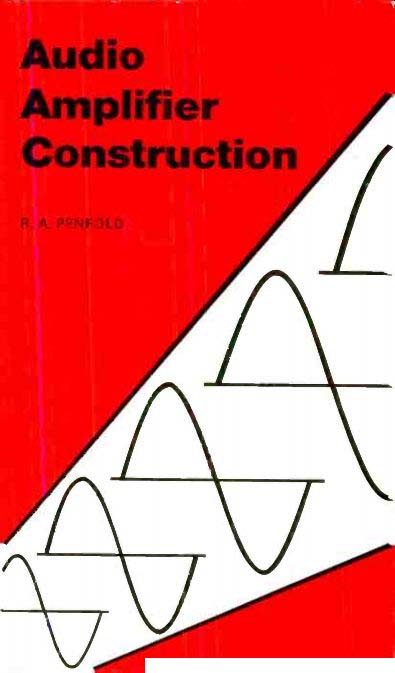AMAZON multi-meters discounts AMAZON oscilloscope discounts

CONTENTS
Section 1: PREAMPLIFIERS
Microphone Preamp
Construction Low Impedance Version
Tape Preamplifier
Equalization The Circuit Power Supply Construction
Guitar Preamplifier
The Circuit Construction High Impedance Buffer Amplifier The Circuit Construction Tone Controls The Circuit Construction Center Tone Control The Circuit Construction RIAA Preamplifier The Circuit Construction
Section 2: POWER AMPLIFIERS
800 mW Amplifier
Construction
2 Watt Amplifier
The Circuit Construction 6 Watt Amplifier The Circuit Construction 18 Watt Bridge Amplifier The Circuit Construction
Auto Switching Unit
The Circuit
Construction
32 W + 32 W MOSFET Amplifier Bipolar Drawbacks Power MOSFETs MOSFET Disadvantages Practical Circuit Performance Power Supply Construction Power Supply Construction Adjustment 100 W MOSFET Amplifier The Circuit Power Supply Construction Adjustment Semiconductor Pin Lead-out Details
Preface:
Despite the progressive broadening of electronics as a hobby with new spheres of interest constantly emerging, audio amplifiers of various types seem to be more popular than ever.
One reason for this is probably the continuing popularity of hi-fi and budget audio equipment. Another is simply that audio amplifiers form an important part of many items of equipment other than hi-fi and low cost audio equipment.
The purpose of this guide is to provide a range of preamplifier and power amplifier designs which will, between them, cover most applications and requirements. The preamplifier circuits include low noise microphone and RIAA types, a tape head preamplifier, as well as tone controls. Power amplifiers from low power battery operated circuits to high power MOSFET types are included, as well as a 12 volt bridge amplifier capable of giving up to 18 watts RMS. All the circuits are easy to construct using the printed circuit or 0.1 in. matrix stripboard designs provided. Where necessary any setting up procedures are described, but in most cases no setting up or test gear is required in order to successfully complete the project. The MOSFET power amplifiers are an exception, but even these only require an ordinary multimeter for initially testing for the correct bias current. Thus most of the projects are within the capabilities of constructors of limited experience, and they are not just for more advanced readers who require a collection of audio circuits.
The purpose of this guide is to provide the reader with a wide range of preamplifier and power amplifier designs that will, it is hoped, cover most normal requirements.
The preamplifier circuits include low noise microphone and RIAA types, a tape head preamplifier a guitar preamplifier and various tone controls. The power amplifier designs range from low power battery operated to 100W MOSFET types and also include a 12 volt bridge amplifier capable of giving up to 18W output.
All the circuits are relatively easy to construct using the PCB or strip-board designs given. […]
Also see:
Using Scopes in Transistor Circuits (1968)
Practical TRANSISTOR Servicing (1967)
Principles Of Transistor Circuits [1959]
Designing Building & Testing Your Own Speaker System With Projects (2nd ed) (1984)